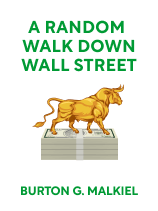
This article is an excerpt from the Shortform book guide to "A Random Walk Down Wall Street" by Burton G. Malkiel. Shortform has the world's best summaries and analyses of books you should be reading.
Like this article? Sign up for a free trial here .
What is the smart beta strategy? Will this approach help you make better investment decisions?
The smart beta strategy is one of the most influential methods of portfolio construction. Building on previous investment theories, the relatively modern smart beta strategy promises to yield greater returns than the market without an increase in risk.
Keep reading for more about the smart beta strategy.
The Smart Beta Strategy, Explained
Although definitions vary, a “smart beta” strategy can be defined as a rules-based, relatively passive model of portfolio construction that yields greater returns than the market without a commensurate increase in risk.
Essentially, smart beta strategies take a broad, market index portfolio—which, of course, has a beta of 1—and customize (or “flavor”) it in ways to increase returns without taking on unnecessary risk. For example, a “smart beta” investor might flavor her portfolio for “value” stocks over “growth” stocks, or small companies instead of large ones.
Smart beta investors determine the risk/return profile of various flavors by using a statistic called the “Sharpe ratio” (created by William Sharpe, one of the developers of CAPM). In the numerator of the ratio goes the difference between the portfolio’s return and the risk-free return rate (typically represented by a Treasury bill return); in the denominator goes the risk of the portfolio, as expressed by the returns’ standard deviation from their mean. The higher the Sharpe ratio, the better the risk-return tradeoff. If an investor can devise a portfolio that has a higher Sharpe ratio than the market—which, since 1927, has had a Sharpe ratio of .42—then that portfolio should provide better returns for the risk than the market.
Four Flavors
Four common portfolio flavors that investors tend toward include:
Value
Preached by early investment sages like David Dodd and Benjamin Graham—and later adopted by Warren Buffett—“value” investing consists in buying stocks with (1) low price-earnings multiples and (2) low price–book value ratios. More rudimentarily, it means investing in companies that are realizing revenues currently and consistently rather than those promising exponential future growth.
Small Companies
A portfolio flavored in favor of smaller stocks may result in larger returns. One study examined returns from 1926 to the present and found small-company stocks produced returns about 2% higher than large-companies’. The Sharpe ratio of small-company stocks over approximately the same period was .23—which means that a diversified portfolio with a tilt toward smaller stocks might raise the overall portfolio’s ratio above the market’s.
Momentum
As noted above, in the long run, there’s no discernable “momentum” in stocks’ prices—rather, their price increases and decreases resemble a “random walk.” However, in the short run, there is some evidence to suggest that stocks do have momentum (that is, price increases will be followed by further increases, declines by further declines). And, thus, a portfolio tilted in favor of stocks with momentum may produce higher returns.
Momentum is measured by examining stocks’ returns over the previous 11 months. A portfolio flavored toward momentum might be long the top-performing 30% of stocks over the previous 11 months and short the worst-performing 30%. Between 1927 and 2017, a portfolio with this flavor would have had a Sharpe ratio of 0.58—0.16 higher than beta.
Low-Beta
Because the empirical evidence has shown that there’s no difference in terms of returns between low-beta and high-beta stocks, investors stand to realize a better Sharpe ratio by being long in low-beta stocks.
One simple strategy is to fashion a portfolio with a beta of 0.5 (that is, a portfolio half as volatile as the market). Evidence indicates that this portfolio will have the same returns as the market as a whole with less volatility.
Does the Smart Beta Strategy Work?
So far, the evidence supporting the flavoring of a portfolio in terms of a single factor—for example, “value,” or “momentum”—is thin. In fact, although there are hundreds of exchange traded funds (ETFs) that flavor their holdings in terms of a single factor, history shows that these funds do not perform better than a broad market index fund.
A better bet for those investors interested in smart beta strategies is what’s known as a “blended factor” portfolio—a portfolio flavored in terms of two or more negatively correlated factors. Blended factor portfolios leverage the benefits of diversification: Because the factors are negatively correlated—that is, one offsets the other—blended factor portfolios minimize risk and enhance returns.
In one study, a blended portfolio that divided its holdings according to four flavors—broad market, small-cap, value, and momentum—ended up with a Sharpe ratio of 0.73! (Recall that the broad market’s Sharpe ratio is 0.42). That blended portfolio, however, produced slightly lower returns than the market (though, as represented by its high Sharpe ratio, with much less volatility). And the study didn’t take into account any fees or transaction costs that might impact returns even further.
There are a number of blended funds currently in operation, including Dimensional Fund Advisors (DFA) funds (ticker symbols DFSVX and DFLVX) and the Goldman Sachs Active Beta ETF (ticker symbol GSLC). Although these funds have shown promise, there are drawbacks; for example, one can only buy DFA funds through investment advisors who charge fees.
All in all, Malkiel advises investors to build their portfolios around a broad market index fund. If a particularly engaged investor is willing to accept a less reliable risk-return ratio, that investor might invest moderately in a blended fund with low expenses and fees.

———End of Preview———
Like what you just read? Read the rest of the world's best book summary and analysis of Burton G. Malkiel's "A Random Walk Down Wall Street" at Shortform .
Here's what you'll find in our full A Random Walk Down Wall Street summary :
- A comprehensive and entertaining introduction to the world of finance
- Practical investment principles that work for every skill level
- The advantages of index investing






